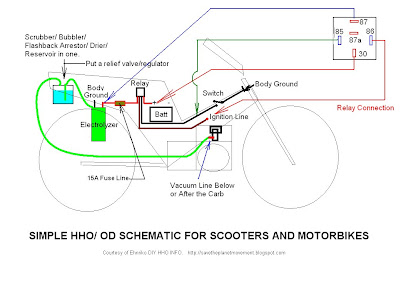
HYDROXY
Stoichiometric Hydrogen and Oxygen Gas
1. GENERAL INTRODUCTION
The product of dissociation of water by electrolysis using the
patented Brown Gas generator is a completely safe compressed stoichiometric
hydrogen and oxygen gas mixture known as hydroxy (Brown's Gas). There is
no other method capable of producing such a gas. The novelty has been
patented in Australia and in other major countries around the world.
2. PROPERTIES OF HYDROXY
2.1 INTRODUCTION
Hydroxy (Brown's Gas) is a new product so there is no literature
describing the properties of this gas. Is has been a popular practice of
other investigators of the Brown's Gas Generator to ascribe to the gas the
properties of molecular hydrogen and oxygen gases in the proportion of 2:1.
Although this assumption seems very plausible it is incorrect. Hydroxy has
properties which are sufficiently different from the combined molecular
hydrogen and oxygen gas mixture to be significant in industrial and
commercial applications.
2.2 SAFETY OF HYDROXY
1. Hydroxy burns with a clear flame and the gas generator supplies the
gases at 280-320 kPa (40-50 psi).
2. The flame contains hydrogen and oxygen and no other elements so the
product of the burning is water.
3. The gas burns with a variety of nozzle sizes and can have a flame
length of up to 400mm.
4. The flame is extinguished by reducing the gas flow at the handle
and this is accompanied by a popping sound.
5. The New South Wales Department of Explosives has approved the
manufacture and use of the gas generation of hydroxy.
6. The flame is easily shown to be an exothermic reaction either with
water as an end product in some applications or dissociated
hydrogen and oxygen in other applications.
7. Hydroxy is safely stored, with little reassociation in the control
cell of the welder.
2.3 TEMPERATURE OF HYDROXY
The theoretical flame temperature is 4900 celsius but the temperature
changes with various applications (refer to #6 of 2.2).
The temperature available with hydroxy can be remarkably high, as, for
example, the flame is capable of drilling holes in high temperature
refractory products.
To illustrate the temperature range it is possible, using the same gas
flame pressure, to:
1. Succesfully weld aluminum sheet (700 celsius)
2. Sublimate tungsten (8000 celsius)
2.4 IMPLOSION OF HYDROXY
It is claimed that implosion, as a single reaction, only occurs with
hydroxy and is impossible with other substances.
1. A volume reduction occurs from 1900 to 1.
2. Detonation is achieved with a hot spark (other methods).
3. Only a low decibel "ping" accompanied the implosion of 3-4 litres
of hydroxy (even this noise level can be reduced).
4. The speed of detonation is greater then 4m/second.
5. When implosion occurs with a water interface no exhaust is
produced.
6. There is no contraction-expansion effect when hydroxy is imploded,
only a contraction.
7. Little heat is lost to the equipment in an implosion cycle.
2.5 ULTRA-HIGH VACUUM FROM HYDROXY
The new era of vacuum technology is possible using the implosion of
hydroxy.
1. The low cost of hydroxy production (340 1/Kwh) ensures a very
inexpensive method for producing an ultra-high vacuum.
2. There isn't another technique for producing a vacuum of such a high
purity in such a short period with very inexpensive equipment.
3.0 APLLICATIONS OF HYDROXY
The efficiency of DC power conversion to the thermal energy of the
produced hydrogen gas is 95%. But AC to DC conversion may be as high as
98% so the maximum efficiency of hydroxy production from AC supply is 93%.
Another important reason for using this electrolysis method for hydroxy
production is its ability to prodce the gas as required. So the inherent
problems of storage and loss by leakage are not relevant. The neutral
flame of hydroxy is important for welding and also as a clean heat source.
The following list fo suggestions for the use of hydroxy are
enumerated some salient properties are addended with a phrase or a simple
elaboration. The list is not exhaustive nor fully descriptive nor is it
meant to rank in order of importance. Naturally, many factors should be
considered when promoting a particular field of application because of the
possible economic, commercial and political disruption which could cause
readjustment at national levels.
3.1 LIST OF APPLICATIONS
1. Gas generator for welding, brazing, soldering.
(ex. AL, TIG. Lost costs, carbonizing flame, cutting, etc).
2. Special high temperature and thermal applications.
(ex. Ceramic surface, tiles, bricks, silica conversion, etc).
3. Atmospheric motor: stationary or transport
"A simple means has been found for making a vacuum, so atmospheric
pressure can be employed as a source of power."
(ex. pump, desalinator).
4. Coal to oil conversion: hydrogen production or new procedure.
(ex. drying coal, coal to graphite, waste gas conversion, etc).
5. Low energy (long time) - high energy (short time).
(ex. wind and other primary sources; low electrical - high thermal).
6. Aero applications: cheapest hydrogen production; turbo design (plus
vacuum).
4.0 CONCLUSION
It is worth emphasizing the five novelties presented by hydroxy:
1. Safety in the generation, storage, and use of the gas.
2. Inexpensive cost of production compared to other alternatives.
3. Very high temperature of the flame.
4. Implosion capability to trigger atmospheric pressure as a source of
power.
5. Ultra-high vacuum with simple equipment at low cost.
Could any other patent present so many innovative and developmental
possibilities as hydroxy with such a multitude of important applications?
R.B. Davis, PhD.
January 26, 1982


